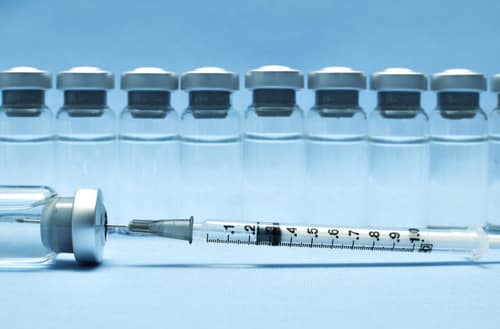The Rise In Whooping Cough Might Come Down To One Particular Sucky 90s Vaccine
 The whooping cough epidemic in the United States has many health officials scrambling. Between the rise of the anti-vaxx movement and, what appears like, an entire socioconomic group shirking vaccination recommendations, we have our hands full. But in evaluating the myriad whooping cough cases in this country, experts have also backtracked to where we’ve been. One vaccine in particular is apparently letting us down. Massively.
The whooping cough epidemic in the United States has many health officials scrambling. Between the rise of the anti-vaxx movement and, what appears like, an entire socioconomic group shirking vaccination recommendations, we have our hands full. But in evaluating the myriad whooping cough cases in this country, experts have also backtracked to where we’ve been. One vaccine in particular is apparently letting us down. Massively.
Msnbc reports that “the safer vaccine,” introduced in the 1990s, “loses effectiveness much faster than previously thought.” Now they tell us:
A study published in Wednesday’s New England Journal of Medicine found that the protective effect weakens dramatically soon after a youngster gets the last of the five recommended shots around age 6.
The protection rate falls from about 95 percent to 71 percent within five years, said researchers at the Kaiser Permanente Vaccine Research Center in Oakland, Calif.
Dr. William Schaffner tells the news outlet that most of the cases of whooping cough in the United States (we’re at more than 26,000 whooping cough cases so far this year, including 10,000 cases in kids aged seven to 10), can be explained as “wanning immunity.” The original vaccine was replaced in the 90s due to little ones citing swelling, pain, fever, and even brain damage in rare instances. The replacement reportedly only used “parts of the bacterium.”
That particular vaccine in conjuction with the rapid rise in whooping cough cases, including a large number of children who have already been vaccinated, have health officials considering ways to bump up that effectiveness.
There’s talk of maybe tacking on another booster shot (that would be six vaccinations in all) or of developing a nasal spray. This development then gives the giggle-inducing image of the anti-vaxx crowd developing a leg of “anti-nasals.” Anti-nasal-sprayers?
(photo: itsmejust/ Shutterstock)





